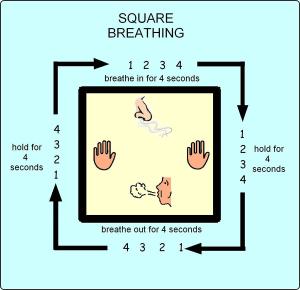Translation of the first part of the Chapter “Busy life” (Vivacious Aliveness: A Look at Embodiment) from the manuscript of the book willow Di is made with the permission of the author specifically for “Eros and the Cosmos.”
Why is it important?
“The nature of work is changing and along with this there are new requirements to professional training and balance between work and life. To survive and thrive in this new context, we all have to learn to more effectively lead, innovate, collaborate, learn and build community” (March, 2013).
This means that the body cannot be eliminated from the equation. We all recognize the need to strengthen our vitality, improve wellbeing and aspirations to higher potentials and in the name of our deepest commitments.
In fact, the idea that the whole is entirely present in any part thereof, and out of the consequences for the worlds of business, education, management and leadership are of key importance in the arguments over participation in practices of embodiment in the body (embodiment).
“Too often… we are stuck in old models of vision and action. Encouraging deeper levels of learning, we contribute to the realization of a greater whole, leading to actions that can help in the formation of evolution and our future” (Peter Senge, 2004).
It is a call we must answer as leaders-converters in education. With this purpose, we need to delve more deeply into ourselves, our students and the world in which we are directly involved. The call to incarnation in the body is essential for you, your guide and your goal.

What is this paper about?
“…The development of the ego is part of the process of realization of Being in the body. It’s part of the process by which Genesis learns to manifest itself and live in embodied existence. At birth, the baby lives as Being, in a state of undivided, which is not associated with the body. Then begins the process when the consciousness is gradually drawn into the body and physical reality. This process of embodiment of Being in the body – the process of personalization of Existence, eventually manifesting as personality, human being.” A. H. Almaas
The main theme of this article – understanding the development of the ego as part of the process of realization of Being in the body. Using primarily an ontological point of view, this article will briefly touch on the role of social psychology, a deplorable error of Descartes, as well as the environment that shapes our relationship to embodiment. We will discuss the emerging science, describing three main sensory center in the body, and the body as a sensory system.
After that will be proposed to the working definition of embodiment (this is the topic of the second part of the article – approx. ed.). We will then consider the possible consequences and application of the embodiment using a simple ontological model. Will be studied the importance of energy management and polarities that arise in embodiment practice. Finally, we shed light on the practice of modeling transformational leadership.
Why bring in the body?
A recent blog entry reflects the widespread view:
“I don’t identify myself with my body. I have the body but I am the mind. My body is close, but difficult relationship, as foreign neighbors, who share a bedroom but not one language. Thinking pair, I contemplate my body with curiosity, like a scientist might observe a primitive look. My mind is a lone wanderer in this universe of bodies” (Stanley, 2013) (Institute of Heartmath, 2013).
This experience and viewpoint is too common. That’s why we got deeper into the practice of habitation of the whole body, every cell and directly to feel much more intimate, a strong and specific way. This blogger reflects on the disembodied life, loves your brain and finds your body is revolting and embarrassing; a good starting point for practice.
“I have a body close, but difficult relationship, as foreign neighbors, who share a bedroom but not one language”
In order to manage well, we need the completeness of information and sensations that can provide a fully habitable body. The body is an intimate and universal source of wisdom. Everyone has a body. From it we receive information about our experience. This information is received as a feeling, arises from the entire body. However, the heart and the intestines is known to provide excellent feedback. Our interior sense is no longer something mysterious and vague.
T. S. Eliot has a famous saying: “We will not cease to explore, but at the end of all our research will have to go back to where we started to see this place again.” So, with the usual humility of a researcher let’s take a closer look at these three centers in the body and throughout the body.
Center in the head: the power of the human brain
Our modern understanding of the brain is expanding rapidly. We have long studied the outer contours of the size, shape and weight of the brain – but only recently we were able to use a combination of functional neuroimaging and PET scan. It provides a comprehensive method to monitor various functions of the brain, to determine patterns of blood flow, patterns of activation and diseases. The result of observation our models of activation may become possible to identify sociopathic behavior before it arises or to notice subtle anomalies and proactively monitor the health condition.
Meanwhile, the study of the influence of the mind on health, psychoneuroimmunology allows us to detect relationships between stress and immunity, as well as the benefits of contemplative practices. This area sheds light on the connection between the body and the mind, confirming for decades floating in the air undeveloped new ajewska hypotheses updated research results.
While we all know that the brain is responsible for the integration of sensory and motor impulses, providing emotional regulation and Executive function of decision-making, as well as many other functions, the current work on the human genome is likely to be exponentially deepen human understanding of how to approach the treatment in a variety of cases.
For our purposes, let’s also call center in the head like he deserves it, “home” for most media of Western culture. Most people tend to “live” or to identify with the mind, above or over the body. The tendency to believe our thoughts as “our own” and to pay attention to our minds is above and apart from other information or feelings – that’s where we begin our discussion of the incarnation in the body.

Beth Scupham, CC licence
“Excessive dependence on the head centre leads to an excess of planning and preparation, over-focusing on what can go wrong, over the imagination and innovative thinking without action. Center in the head in ever tightening circles; twists ideas, plans, proposals and can’t decide where to go, or trying to implement all at once. What ideas should be implemented? Where to focus attention and energy? If you use only the head, other people are almost not taken into account. The head is disconnected from passion and purpose. You can eventually get a well thought-out decision, taking into account unforeseen circumstances and approaching the realization of his vision, but it can be heartless and pointless both for you and for others. People can experience this behavior “from the head” as cold, impersonal and calculating” (Appel, 2013).
The heart center: what is the mind of the heart?
To be kind is more important than always being right. Sometimes all we need is not gifted with a mind that speaks but a patient heart that listens (searchquotes.com).
“The mind (intellect) is the flow of awareness, understanding and intuition we experience when the mind and emotions form a coherent whole with the heart. It can be activated through independent practice, and the more we pay attention to how your heart speaks to us or guides us, the greater our ability to get access to this mind and leadership. Heart intelligence underlies cellular organization and guides and evolves the organisms in the direction of increasing order, awareness and coherence of their bodies” (Institute of Heartmath, 2012).
“Currently, there is evidence that the heart is one of the types of nervous tissue, and it indicates that heart and mind interact with each other to process information” (2130 Partners, 2010). Perhaps this explains the experience of inner attunement, when the head and heart of a synchronistic decide.
The Institute of HeartMath says a lot about coherence, heart coherence, the heart rhythm coherence, physiological coherence, etc., as consistency is very important so that we can maintain our mental, emotional, physical and spiritual well-being. Consistency in any system, including the human body refers to the logical, orderly and harmonious relationship between the parts. If we turn to physics when we are in a coherent state, virtually no power consumption, because our systems are working optimally and there is synchronization between the heart, respiratory system, blood pressure rhythms, heart rhythm variability, etc. When we talk about coherence in cardiac rhythm, we mean a smooth, orderly types of heart rhythm. Among the many advantages of harmonization – peace of mind, good energy levels, clear thinking and proper functioning of the immune system (Institute of Heartmath, 2013).

WildInWoods, CC licence
“When we make decisions from the heart, it often manifests itself as anxiety about the impact we create on others. The focus is on the individual, authentic expression, passion and self-perception.
The lack of excessive dependence on the heart center is that often there is increased attention to how the person is perceived by others or whether it is in the right mood. Those who overly rely on heart intelligence, can look like they lose sight of what is happening under their noses, overly focused on themselves, self-absorbed or too involved in other people’s lives. They will probably get stuck in desires, expectations, dreams, longing and hope. The best solution is achieved if each center of intelligence will be his place at the table. An integrated response will serve you and others. Using the integrated actions of chances to engage others along with you is much higher” (Appel, 2013)
The best solution is achieved if each center of intelligence will be his place at the table
The centre of the abdomen: our “second brain”
Our interior sense is no longer something mysterious and vague. “The”second brain” is not involved in complex thought processes… religion, philosophy and poetry remain the part of the brain in the head”, says Michael Gershon (Michael Gershon), Chairman of the Department of anatomy and cell biology at new York Presbyterian hospital / the Medical center of Columbia University, an expert in the nascent field of neurogastroenterology. He also reports that:
Formally known as the enteric nervous system second brain consists of sheaths of neurons embedded in the walls of the long tube of our gut, or alimentary canal, whose length from esophagus to anus is about nine metres. The second brain contains some 100 million neurons – more than in the spinal cord or in the peripheral nervous system, says Gershon.
This multitude of neurons in the enteric nervous system enables us to “feel” the inner world of our gut and its contents. Much of this neural firepower is evident in the rigorous daily grind in the process of digestion. Chop up food, absorb nutrients and eliminate waste – all of this requires chemical processing mechanical mixing and rhythmic muscle contractions that push contents down.
Thus, equipped with its own reflexes and senses, the second brain can control gut behavior independently of the brain, says Gershon. We probably developed this complex neural network to the process of digestion and elimination can occur “in place” and not remotely from our brain when an intermediary acts as the spinal cord. “The brain in your head no need to dirty hands, dirty business of digestion, which is transmitted to the brain in the gut,” says Gershon. However, he and other researchers explain that the complexity of the second brain is likely to be interpreted only through this process (Hadazy, 2010).
Understanding quasi-independent of those reasonable processes that the bowel does in our body, explains our relationship with the intestines. Although some of us every day directs attention to this area, many still have not formed that habit. At the same time, the intestine – more than a distant goal to our attention that partly helps to explain this experience.
Excessive reliance on the centre in the intestines can lead to impulsive decisions.
“People tend to respond to stimuli. Although in emergency situations orientation to action is good, often don’t have time to weigh all “for” and “against” or to take into account the feelings. It is unwise to ignore empathy and the impact of decisions on themselves and on others. Discarding the importance of planning and training, detect potential problems, find innovative solutions, and then the action with no peripheral vision and are unlikely to lead to optimal solution” (Appel, 2013).
The advantage of using the centre in the intestines when making decisions is a distinct sense of deep knowledge. Our tendency can be felt directly and immediately.
Body as a whole: perception
It is right and good to recognize the three primary sensations and feedback, but in the end we are all quivering mass of energy and sensations. Let’s not forget about the fact that every cell, molecule and atom vibrate with life and react to accomplished every moment of the event called Life.
Given that the body is a finely tuned instrument, consisting of extremely delicate structures, we are constantly invited to settle in deeper every system inside, even at the cellular level. The relationship between the body, mind, touch and movement show that our ability to change others begins with our own ability to perceive and to feel our bodies, as shown in the works of Bonnie Bainbridge Cohen, in her fundamental work called Body-Mind Centering. Historically, many practices have explored and articulated the relationship of the development of movement, touch and awareness, but this line of work provides his followers with endless possibilities for the realization of the embodiment approach in the lives of others.
As teachers and future leaders, we have both an opportunity and a responsibility to convey our deep knowledge of those around us. We also have an incredible, affordable, divine tool that is at our disposal at every moment, and which you can use to carry out the transfer. The opportunity to gain information or to move the prospect from one area of inner experience to another as rich as the fertile soil. Those who are able to slow down enough to experience these places in the body, get power and knowledge in return.
We have fantastic, affordable, a divine tool that is at our disposal every moment
It is impossible to find a replacement for simple perception and feeling the whole body as our primary border with the world. Perception, feeling, action – as a universal process – often distorted by our unwillingness to feel. Instead, we tend to perceive, plan and respond. Don’t miss the opportunity to give the soft animal of your body and its innate wisdom. We can point to the benefits of the habitation of our body with the help of physical exercises and practices, however, the ineffable dimension of direct experience in parts of our bodies can illuminate the path for your personality like nothing else. Direct feedback from the entire spectrum of consciousness is under your skin, and it is possible to feel, to observe.
Keep in mind that we are not talking about excessive identification with the body. On the contrary, the observation of the experience of our physical existence is a quick way to become conscious in relation to all its treasures, so varied and mysterious, painful, stressful, confusing and at the same time warm, flowing or extensive. Awareness breeds awareness, and it doesn’t have lollipops or rainbows.
The bottom line is that staying in this unique personal vessel and knowing yourself as intimately as possible, we can put themselves at the service the ability for a much more informed way. We need to raise our bodies and to start a movement… a movement to our full permeability (transmission).

Recent studies have shown that we can literally change our DNA with intention. As a result, other researchers have suggested that the DNA in the cells and structures of a higher order – the higher self or spirit is a “power relationship, or an informational contact” (Heartmath Institute). In addition, “the heart, which generates a much stronger electromagnetic field than the brain, provides the energetic field that binds together the structure of higher order many body systems, including his DNA”. Theory Childre heart intelligence suggests that “people who are able to maintain the state of cardiac coherence, strengthen the contact with the structures of higher order, which in turn largely contributes to the changes of DNA” (Heartmath Institute).
In the end, “our heart is included in the electromagnetic fields within fields, the built-in holographic hierarchy, the whole exists within each piece, and everything is functioning as an integrated driving force” (Pearce, 2002). The working phrase – the integrated driving force is the key here. From our DNA through sensory perception of our heart we can literally change the reality..
All together now
Many philosophers, spiritual teachers and professionals agree that each of the centers brings a special energetic aroma in the atmosphere of our existence. In this quote Almaas tells about bodily centres and their functioning:
…Usually the center of the abdomen is associated with the embodiment in the body (embodiment), with the ability to perceive himself. However, the center of the abdomen is the centre of will. In a sense, the ultimate end of will is the ability to surrender to what is happening, surrender to the present moment. And surrender really means is that you should never hold on to. The true purpose of the will is the ability to complete delivery of the events without clinging to anything. It will. Essential “I”, as well as other aspects of the Entity can operate in either a thin center. When a man is the essential “I”, it usually is within the heart center. However, when the essential “I” operates in connection with the identification or rabotodatelyam with any content of experience, it begins to correlate with the center of the abdomen. Essential “I” is rather the capacity to implement the experience, and it also manifests as the ability to identify. One consequence of the ability to be identified is the embodiment in the body. To realize something in the body means to be identified with what is happening. The essential condition is present. You embody it in the body if you are them. The true “I” has the ability to identify with a particular experience, but it is not obliged to do so. He has a choice, there is freedom. When you are true self, you can become what you have – a hundred percent. If this is the truth, you are truth – “I am the truth”. But as soon as there is something different you become. There is no clinging to anything (Almaas, 1988).
A lot can change simply by being.
The body as a social Holon
Our bodies do not exist in a vacuum. We are social beings; we live in one or more cultures in our global society, and they have different values. As human beings, we live and in our main culture and several subcultures. Take a look at the origin of your family and its special culture in relation to the national culture in which you grew up. The values that these cultural environments impose on the body affect our perception of ourselves and our actions.
Holon is a whole that is simultaneously part of another whole. Think of itself as a Holon. As an individual, you are whole. You consist of different subsystems, such as your skeleton (structural Holon), nervous system (informational Holon), circulatory system (internal distribution of energy), etc. Each of these holons, in turn, composed of other holons. Thus, to continue on to look inside yourself, you eventually get to genes, cells, molecules, atoms, subatomic particles, strings and beyond. You have properties or characteristics that are unique to you and your level of description. For example, you can walk and talk – none of the subsystems is unable to do it yourself. Your ability to walk and talk, your personality, your individual skills and competencies arise from the cooperation of the parts. They are new properties that arise at the level of description you as a whole. You are also part – no man is an island! You need to have relationships with other people. You are a part of your family. The family has new properties. You are part of many holons. (University of Briston, 2013) Please note the different social circles in which occurs your life: work, family, community, social circles in the entertainment industry, spiritual or religious Association, etc.
Although this article briefly indicated the social psychology of the incarnation in a body (embodiment), in this area you can explore much more, as you can imagine. In this article, we will focus on the influence of the embodiment approach in leadership and/or teaching in higher/deeper levels of presence. Of course, one of the main social factors that influence how we manifest in the body, is gender. Differences in cultural perception of the size and shape of the body are as numerous as the number of cultures that exist today on the planet. The relentless spread of media messages about what “should be” our body, especially in the West are, quite simply, is this: rampant. Quickly nodding in the direction of social influence on the embodiment, there we go.

The environment in which we live, is of great importance, which is often ignored. How we furnish our offices, can play a significant role in the level of our daily physical activity, and the same is true for our dwellings. The physical routine is formed by our physical environment, and its easy to change, if you approach it consciously. For example, if you expand the sofa in your room towards the window, it can create conditions in which more time will be given to reading, not watching TV. Replacement chair cushion for meditation, most likely, will remind you more likely to meditate than to take in reflection. These simple adjustments, taken together, can significantly change our habits and the results that they create.
Bibliography
- Almaas, A. (1987). Diamond Heart Book III. Boston, MA.
- Almaas, A. (1988). Pearl Beyond Price: Integration of Personality into Being: An Object Relations Approach. Boston, MA: Shambala.
- Anderson, D. A. (2010). Beyond Change Management. San Francisco, CA: Pfeiffer.
- Appel, W. (2013, February 26). Integrated Response to Decision Making: Head, Heart, Gut. Retrieved from WendyAppel.com: http://www.wendyappel.com/integrated-response-to-decision-making/
- Audi, R. (1999). The Cambridge Dictionary of Philosophy, Second Edition. Cambridge: Cambridge University Press.
- Benke, E. A. (2011, August). Husserl”s Phenomenolgy of Embodiment. Retrieved May 15, 2013, from Internet Encyclopedia of Philosophy: http://www.iep.utm.edu/husspemb/
- Bonder, S. (2006). Waking Down: Beyond Hypermasculine Dharmas. San Anselmo, CA: Mt. Tam Awakenings.
- Brothers, C. (2005). Language and the Pursuit of Happiness. Naples, FL, USA: New Possibilities Press.
- Burger, B. (2011). Esoteric Anatomy: The Body As Consciousness. San Francisco, CA: North Atlantic Books.
- Cuddy, A. (2012, October 1). Your Body Language Shapes Who You Are.
- Dea, W. (Ed.). (2011). Igniting Brilliance: Integral Education for the 21st Century. Tuscon, AZ: Integral Publishers.
- Duffy, K. S. (2012). An Ontological Approach to Thought Loops and Growth Edges.
- Hadazy, A. (2010, February 12). Think Twice: How the Gut”s “Second Brain” Influences Mood and Well-Being. Scientific American Magazine.
- The Heartmath Institute. (n.d.). You Can Change Your DNA. Boulder Creed, CA.
- Institute of Heartmath. (2013, May 15). Research FAQS. Retrieved May 15, 2 – 13, from Institute of Heartmath: Connecting Hearts and Minds: http://www.heartmath.org/faqs/research/research-faqs.html
- Internet Encyclopedia of Philosophy: A Peer Reviewed Academic Resource. (2011, August 27). Husserl”s Phenomenology of Embodiment.
- Josephs, B. J. (2007). Leadership Agility. San Francisco, CA: Jossey-Bass.
- March, S. (2013). Integral Action Design. San Francisco, CA, 2013.
- Marshall, S. P. (2006). The Power to Transform: Leadership That Brings Learning And Schooling to Life. San Francisco, CA: Jossey-Bass.
- Pearce, J. C. (2002). The Biology of Transcendence. Rochester, VT: Park Street Press.
- Peter Senge, C. O. (2004). Presence: Human Purpose and the Field of the Future. New York, NY: Crown Business.
- Rollin McCraty, M. P. (n.d.). Modulation of DNA Conformation by Heart-Focused Intention.
- Schwartz, J. L. (n.d.). The Power of Full Engagement. Managing Energy, Not Time, is the Key to High Performance and Personal Renewal. Retrieved May 23, 2013
- Stanley, B. J. (2013, May 6). I Am Not This Body. Retrieved May 10, 2013, from osvilt.com: https://opinionator.blogs.nytimes.com/2013/05/06/i-am-not-this-body/
- The Body: A Phenomenological Perspective. (2013, May 8).
- University of Briston. (2013, May 10). University of Briston Civil Engineering, Holon A Definition. Retrieved May 10, 2013, from http://www.bris.ac.uk/civilengineering/research/systems/civilengineeringsystems/holon.html
- Weiss, G. a. (Ed.). (1999). Perspectives on Embodiment. Routledge



